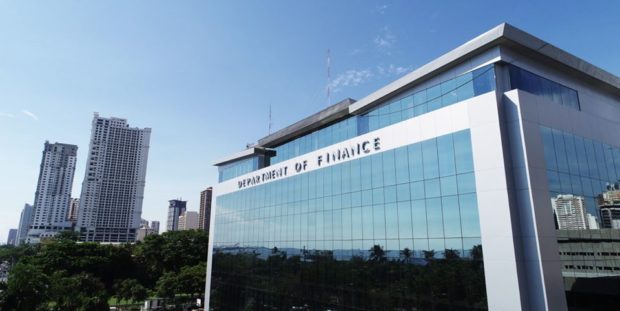MANILA, Philippines—With the three economic liberalization laws and corporate tax reform already in place, attracting at least $10 billion in brick-and-mortar foreign direct investment (FDI) yearly would be achievable, the Department of Finance (DOF) said on Friday (March 25).
“The $10-billion worth of FDI is a high watermark to beat but it is within reach with the combined effects of CREATE, the ‘Build, Build, Build’ program, and key structural reforms introduced by the amendments to the Retail Trade Liberalization Act, the Foreign Investment Act, and the Public Service Act,” said Gil Beltran, the DOF’s chief economist and former undersecretary, in an economic bulletin.
CREATE—or the Corporate Recovery and Tax Incentives for Enterprises Act—seeks to lure potential elephant-sized foreign investments through lower corporate income taxes plus hefty incentives packages. “Build, Build, Build,” seeks to address long-standing investor concerns on the lack of infrastructure in the country.
Amendments to the Public Service and Foreign Investments laws signed by President Rodrigo Duterte this month—alongside the amended Retail Trade Liberalization law last December—would open sectors which had been previously closed to foreign investors.
Instead of amending the 60-40 limit on foreign investments (60 percent Filipino, 40 percent foreign) in the 1987 Constitution, which would take time because of resistance to Charter change, Duterte’s economic team had instead pushed to amend these three antiquated laws.
The Organization for Economic Cooperation and Development (OECD) had identified the Philippines as among the most restrictive economies to foreign investment entry, which was the reason it lagged behind most of its Asean neighbors in attracting job-generating FDI.
To date, annual FDI inflows to the Philippines breached the $10-billion level only twice — in 2017 with $10.3 billion, boosted by Japan Tobacco International’s (JTI) acquisition of shuttered homegrown cigarette maker Mighty Corp. and last year, with a record $10.5 billion.
Beltran attributed last year’s highest-ever haul partly to investor confidence because of “a sustained vaccination drive and a prudent and calibrated reopening of the economy.”
“Meaningful inflows of foreign investments bring in more dynamism to the economy and will help hasten the economy’s path to recovery. They provide competition to the big fish in the small pond not only in terms of product or service quality but also in terms of attracting workers,” Beltran said.
“Effectively, foreign investments make the pond bigger, widening the pool of employment, and, possibly, offering higher wages in their bid to attract skilled workers,” Beltran said.
“For a pragmatic household head with a family to feed and children to send to school, he or she would not care if the employer is brown, yellow, or white as long as the paymaster pays well,” he added.
Besides the legislated reforms supportive of foreign investment generation, Beltran said it was “very important that the ongoing infrastructure projects are completed for the country to benefit from their immediate catalytic effects as they increase the economy’s productive capacity–an unfinished bridge does not reduce travel time by even a minute and, consequently, does not inspire any additional investor confidence.”
For Beltran, “the next administration may need to continue structural reforms in the economy to sustain investor confidence and accelerate FDI inflows.”
TSB
